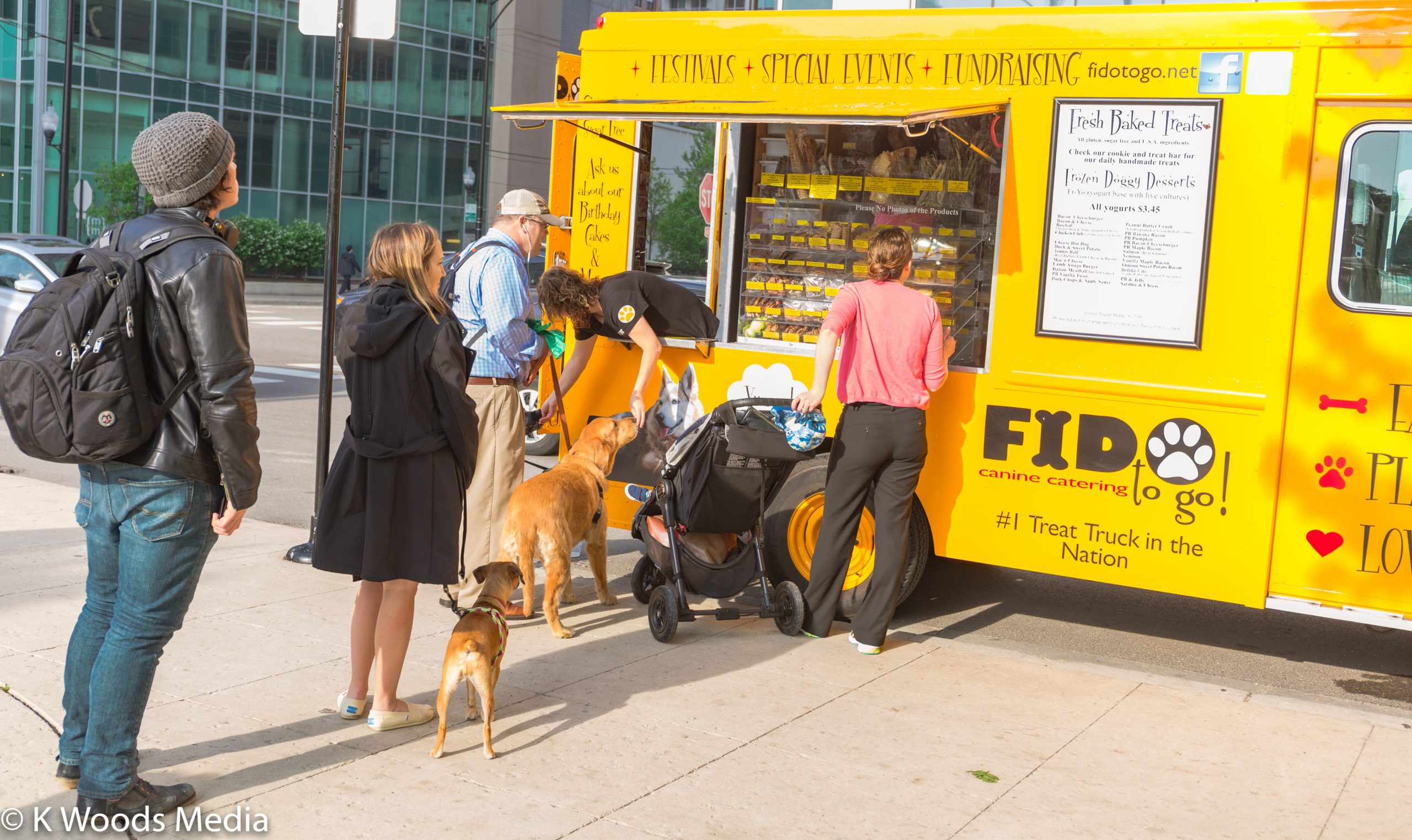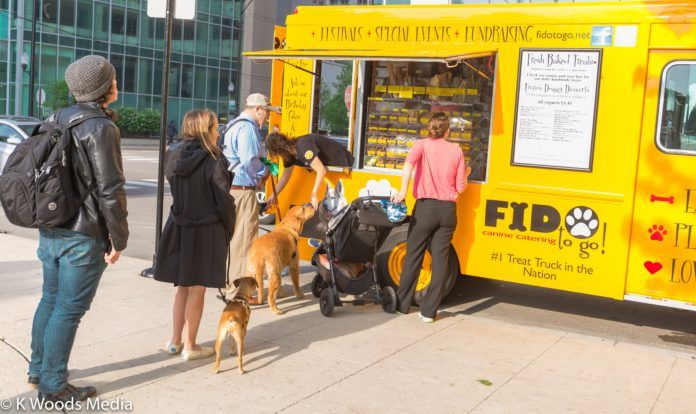Gone are the days when pretty much all you could order at a food truck was a hot dog and a soda. On the Rose Kennedy Greenway in downtown Boston, for instance, lunchtime diners enjoy walking over to dozens of food trucks to chow down on the likes of Latin and Caribbean farm-to-plate meals, Indian cuisine, Moroccan fare, and, at the Shuck Food Truck, fresh seafood.
Fido To Go

As it goes with people, so it goes with our dogs. A growing trend in cities across the country is the proliferation of food trucks dedicated to, shall we say, discerning canine appetites. Austin’s Bow Wow Bones food truck offers treats in flavors such as salmon and Parmesan, cheesy apple, and veggie (made with whole-wheat flour and cilantro). Milo’s Kitchen Doggie Treat Truck, which travels around the country, serves chicken meatballs and gilled burger bites. At the Seattle Barkery truck, you can find peanut butter pumpkin pretzels for Fido along with bacon cupcakes and beefy carrot bagels. Mmmm!
The trucks are a lot of fun, providing new opportunities for fellow dog lovers and their dogs to socialize with each other.
In addition, many of the truck owners truly care about doing good — and put their money where their mouths are. For example, Chicago’s Fido To Go truck, which makes the rounds at that city’s parks, beaches, special events, and festivals, donates 10 percent of its proceeds from one treat each month to a charity organization.
The trucks’ purveyors also have a lot to say about the wholesomeness and healthfulness of the foods they sell, perhaps leading to the idea that the treats make the best options for a dog’s diet.
Talking up quality ingredients and dogs’ health
From the marketing materials proffered by the different food trucks, it might be easy to assume that a meal that comes from a set of four wheels can replace the kibble you serve at home, and perhaps is even better for your dog. Fido To Go talks about its “hand-crafted, gluten- and allergen-free canine cookies, doggy ice cream, and frozen yogurt.” The treats also don’t contain any additives.
Milo’s says that “all of our home-style dog treats are 100% real,” by which the company means that chicken, beef, duck, or sweet potato is the first ingredient. It also says its treats are free of artificial flavors and colors and that all of its major ingredients are sourced in the U.S. rather than from abroad. And Bow Wow Bones’ treats are “all natural, preservative-free,” and “locally baked.”
We have no reason to doubt these claims. We just don’t want you to be lulled into thinking that they can replace kibble you feed in your kitchen that comes from a large, reputable company with a veterinary nutritionist on staff to ensure that the food is balanced in all the right ways with vitamins, minerals, and other nutrients. That is, a dog treat may be free of gluten and other ingredients that could potentially trigger allergic reactions, but that doesn’t mean it has the right mix of calcium, protein, carbohydrates, and other essential nutrients that a dog needs to thrive. (By the way, most dogs who have allergies are allergic not to food ingredients but to airborne substances like pollen and mold spores.) As for preservatives, they help keep a food from spoiling and thereby cut down on potential problems. And some preservatives are actual nutrients, like vitamins C and E. As for locally sourced ingredients, they are kind of cool but not really about a dog’s health.
In other words, you should not be regularly feeding your dog treats from a food truck and thinking it’s his lunch. That would be like saying that feeding your kid from a candy store is giving him a meal. The owners of the food trucks corroborate this when asked. Says the owner of Fido To Go, Donna Santucci, “not meals…only treats.” And Milo’s says right on its website, “as with any pet product labeled as a treat or snack, Milo’s Kitchen dog treats should not be substituted for a balanced diet, and treats should make up no more than 10% of your dog’s caloric intake….Your dog’s veterinarian can…provide guidance on how many calories your dog may consume daily.”
We couldn’t have said it better ourselves.





